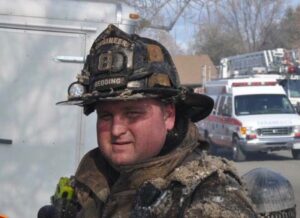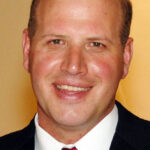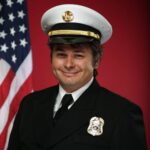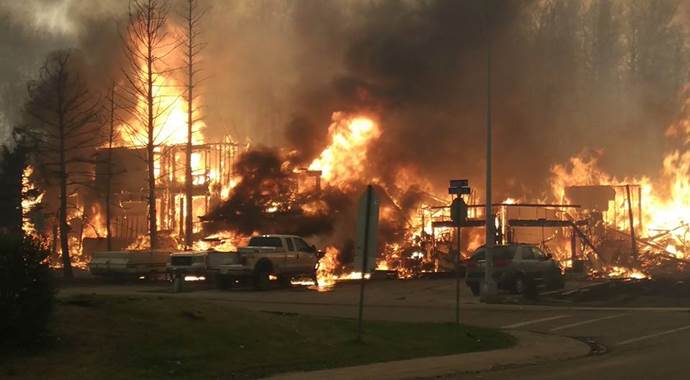Wildfires in California are burning at a pace that could well make this fire year the worst in the state’s history. Fast-growing, expansive fires are igniting earlier, already scorching nearly three times the number of acres over the same period last year and taxing firefighting resources.
“The effect of this year’s fires on our members has been far too great,” says General President Harold Schaitberger. “We have lost three of our members and at least eight others have lost their homes.”
The largest — the Carr fire — ignited July 23 when a vehicle’s wheel rim scraped the asphalt, creating sparks near Whiskeytown National Recreation Area. Three days later, the fire jumped the Sacramento River and was rapidly making its way toward Redding, threatening thousands of homes, including those belonging to IAFF members.
“Unlike the typical wind-driven fire that moves in one direction, this fire went in different directions as it grew,” says Redding Local 1934 President Matthew Oliphant, who was deployed to area neighborhoods along with other members.
 Local 1934 member Jeremy Stoke decided to cut his vacation short to help with evacuations, going door-to-door in his department vehicle in the neighborhoods in the path of fire. An 18-year veteran fire fighter, Stoke was in his car when what was later described as a fire tornado suddenly formed around him, and he was unable to escape. Stoke died from his injuries.
Local 1934 member Jeremy Stoke decided to cut his vacation short to help with evacuations, going door-to-door in his department vehicle in the neighborhoods in the path of fire. An 18-year veteran fire fighter, Stoke was in his car when what was later described as a fire tornado suddenly formed around him, and he was unable to escape. Stoke died from his injuries.
Oliphant says, “We are stunned and heartbroken by the loss of our brother.”
As the events of the Carr fire unfolded, the IAFF quickly mobilized a disaster relief team, establishing a command center at the Redding Local 1934 union hall. “I am thankful the IAFF was able to assemble a team to assist us. It was amazing how fast they got there,” says Oliphant.
“As the initial reports came in, my priority was to make assistance to our members immediately available,” says 10th District Vice President Frank Lima. A team — including Santa Rosa Local 1401 President Tim Aboudara, who was involved in disaster relief operations during the large fires in late 2017 — was deployed to help with critical needs, including distributing disaster relief funds, providing housing assistance and offering peer support.
“There was a lot happening at one time,” says Aboudara. “Our members’ homes were burning, and then we also got word that Brother Stoke had died. Making peer support counseling available right away became a priority.”
Local 1934 Vice President Mike Lowrey worked with Aboudara to assemble resources. Lima, California Professional Firefighters (CPF) President Brian Rice and CAL FIRE Local 2881 Vice President Darren Dow arrived a short time later. “After opening up the union hall for the command center, I stayed 19 hours the first day and many more in the following days, making phone calls to as many members as possible,” says Lowrey. “The main objective was to let them know we were there and ready to provide assistance.” The disaster relief team worked to organize a 48-hour stand down for Redding members. Fire fighters from outside the department covered shifts to give Local 1934 members time to go home to assess their own situations and decompress from all that had occurred.
Local 1934 member Joe Hansen was among eight members who lost their homes. “The magnitude of the fire’s impact was a lot to digest,” he says. “Having the IAFF there to guide us through the steps we needed to take to process insurance claims and find long-term housing was critical.”
The Carr fire was only a few miles from Hansen’s home. “It had moved from 15 miles away to five or six miles away practically overnight. I knew it was time to move my family out of harms’ way.” His wife and son went to stay with family, and he later learned that the fire had reached his subdivision. He didn’t know for sure that his home was gone until he got off shift.
It was September before fire fighters were able to fully contain the Mendocino Complex Fire — a merging of the River and Ranch fires — which also ignited at the end of July. These fires grew to nearly 460,000 acres, making the fire the largest recorded wildfire in California history. “There is a lot of rugged terrain where this fire was,” says CAL FIRE Local 2881 President Cliff Allen. “There are large canyons and no roads, so just getting to the fire line was problematic and very dangerous.”

9th District Vice President Ray Rahne and Professional Fire Fighters of Utah (PFFU) President Jack Tidrow assembled a 12-member peer support team to reach out to Utah members in the wake of Burchett’s death. Over the course of a few days, the peer support team personally contacted or visited more than 700 Utah members.
A third IAFF member, CAL FIRE Local 2881 member Braden Varney, was killed earlier in the year while fighting a wildland fire near Yosemite National Park. He was fatally injured when the bulldozer he was operating rolled over.
The number of wildfires in the United States and Canada continues to increase. Once contained to areas of rough terrain and wilderness, wildfires are now threatening areas where land, homes and businesses are on the fire line.
There is clearly a need for increased staffing and resources, and the IAFF has taken an active leadership role in making sure our members are equipped and trained to safely and effectively respond to the challenges of wildland firefighting, developing basic skills needed to safely operate in urban interface environments and successfully defend homes while fighting fires.
Schaitberger says, “We need to ensure our members tasked with protecting homes and occupants during these fires are safe and appropriately trained.”



